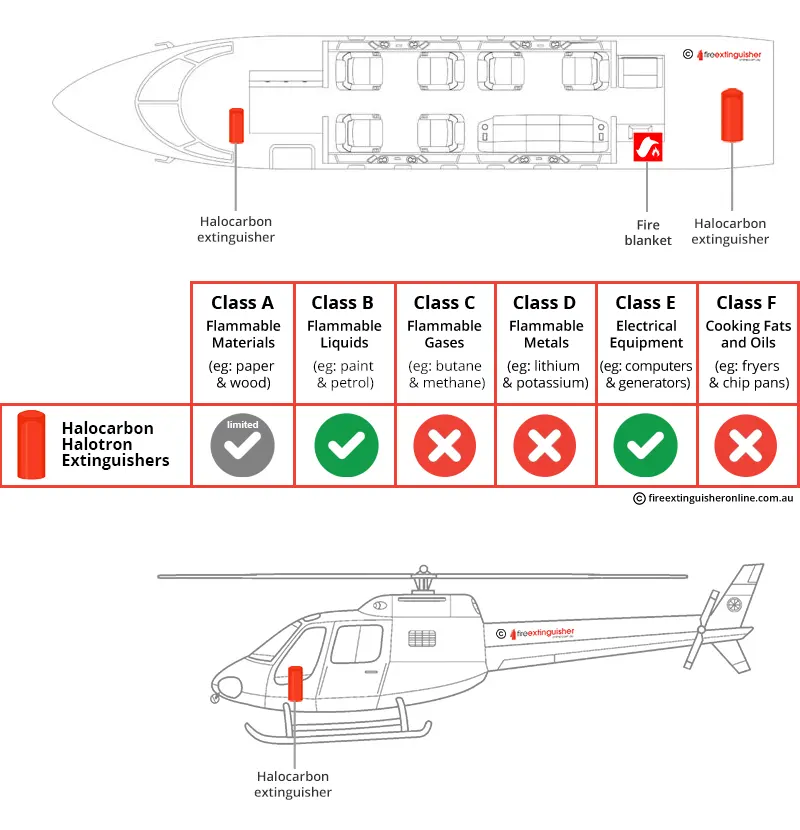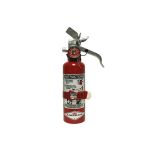Going flying with your Aircraft? Are you prepared for a Fire?
In Australia, regardless of whether the regulations require a Fire Extinguisher or not, CASA (Civil Aviation Safety Authority) recommends at least one Fire Extinguisher be fitted to an aircraft and that it will be accessible to a pilot.
What fire safety equipment should I have in my aircarft?
Our recommended fire and overall safety products for your plane or helicopter include:
Which fire extinguisher is the best for my aircraft?
While there are a few different types of fire extinguishers (dry powder, water, foam, carbon dioxide, wet chemical), following the Australian Civil Aviation Safety Authority recommendations, here is the best extinguisher for your plane or helicopter:
Less environmentally toxic Halocarbon extinguishers (also referred to as ‘Halon-replacement’ extinguishers) are now the recommended extinguishers.
For an aircraft manufactured after the 31st December 2018 that only requires one fire extinguisher, extinguishers must not contain Halon.
The following Halocarbon fire extinguishing agents are approved equivalents in Australia to Halon in Portable fire Extinguishers: Halotron™ I, FM-200 or FE-227, FE-36, Halotron™ BrX.
Fire rating requirement: An Australian 1B:E (or a US rating 1B:C) rating should be considered as the minimum extinguishing rating. If the cabin area is larger than 5.6 m3 (200ft3), a 5B:E rating is required.
Not to be used fire extinguishers?
Carbon dioxide Fire Extinguishers extinguish fire by reducing the concentration of oxygen and/or the gaseous phase of the fuel in the air to the point where combustion stops. Assuming a perfect mix, carbon dioxide will not support life when used in sufficient concentrations to extinguish a fire and therefore should not be used onboard an aircraft.
Dry chemical/powder extinguishing agents when discharged may cause serious impairment to visibility and should not be located or used in any enclosed compartment common to the flight crew of an aeroplane or helicopter. Additionally there are corrosion and clean up issues with dry powder. However, for the highly ventilated open cockpit environments of a hot air balloon basket, ABE dry chemical/powder extinguishing agents are recommended over Halon.
data sourced on https://www.casa.gov.au/ - AIRWORTHINESS BULLETIN (AWB 26-002) - Selection and Installation of Handheld Portable Fire Extinguishers.

How to use an aircraft Fire Extinguisher?
Knowing how to operate an aircraft fire extinguisher could save your life in an emergency.
The key to putting out a fire with an aircraft extinguisher is to use the PASS strategy: Pull the pin, Aim the hose towards the base of the fire, Squeeze the lever, and Sweep the hose.
Remember: Fires double in size every 60 seconds so use a fire extinguisher for small, contained fires only.


